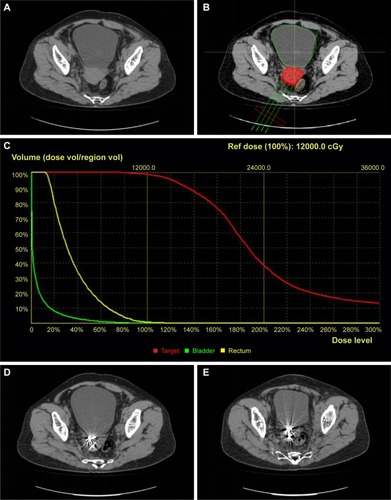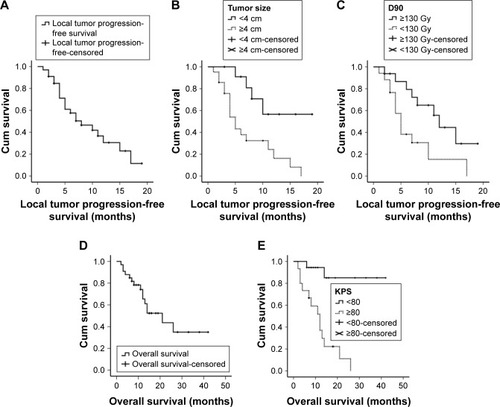Figures & data
Table 1 Patients’ characteristics
Figure 1 Administration of 125I seed brachytherapy.

Figure 2 (A) Local tumor progression-free survival after 125I brachytherapy. (B) Local tumor progression-free survival in patients with tumors of different sizes. (C) Local tumor progression-free survival with D90≥130 Gy and D90<130 Gy. (D) Overall survival rate after 125I brachytherapy. (E) Overall survival rate in patients with different KPS.
Abbreviations: Cum, cumulative; KPS, Karnofsky performance status.

Table 2 Treatment outcomes of 125I seed implantation
Table 3 Univariate analysis regarding LTPFS and OS
Table 4 Results of Cox proportional hazards regression analysis for LTPFS and OS
Table 5 Relief of clinical symptoms
